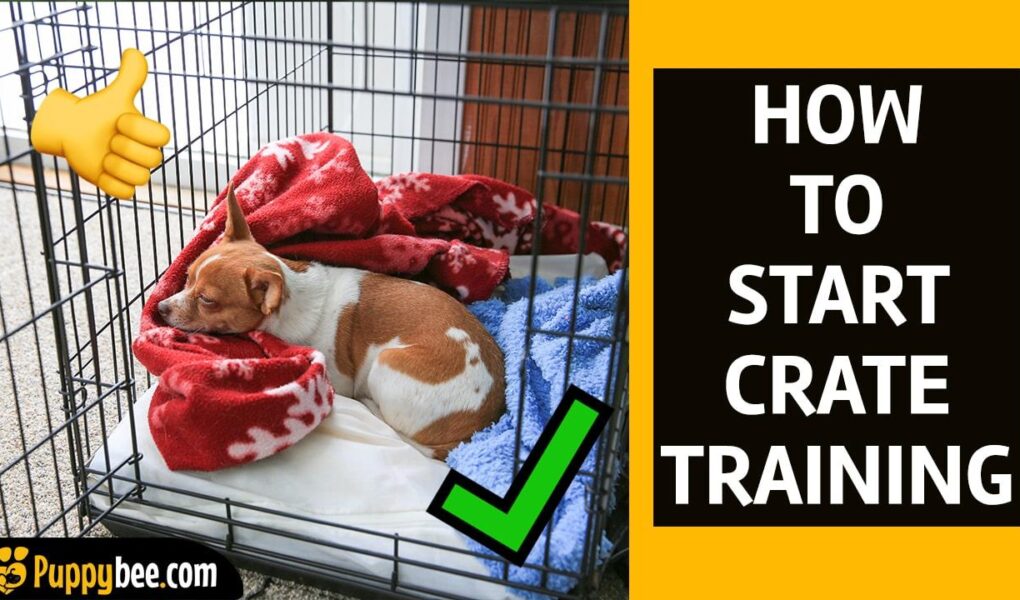In a world where our furry companions have seamlessly integrated into the fabric of our daily lives, the art of training them often becomes a delicate dance between understanding their instincts and nurturing their needs. Amidst the myriad of training techniques available, crate training stands out as a versatile method that not only promotes good behavior but also offers a sanctuary for our pets. Picture a cozy refuge, a den-like space that taps into a dog’s natural instincts while fostering a sense of safety and security. This article delves into the principles of crate training, exploring its benefits, debunking common myths, and providing practical tips to transform this simple tool into a powerful ally for both pet and owner. Join us as we unlock the door to a harmonious relationship built on trust, comfort, and respect.
Table of Contents
- Understanding the Benefits of Crate Training for Your Pet
- Creating a Safe and Comfortable Space for Your Dog
- Mastering the Techniques of Positive Reinforcement
- Common Challenges and Solutions in Crate Training
- Q&A
- To Wrap It Up
Understanding the Benefits of Crate Training for Your Pet
Crate training offers a variety of advantages that can enrich both your pet’s life and your own. This method provides a safe haven for pets, creating a cozy retreat where they can relax and feel secure. Additionally, it encourages the development of good habits by promoting routines for feeding, sleeping, and house training. The crate acts as a personal space for your pet to retreat to when they need some quiet time, helping to reduce anxiety and stress, especially in new environments. This emotional stability is beneficial for pets, fostering a sense of security and well-being that translates into positive behavior.
Alongside behavioral benefits, crate training can also aid in managing certain challenges. For instance, here are a few key benefits:
- House Training: Crates can help control accidents by teaching your pet to wait until they are let outside.
- Travel Safety: A crate provides a secure environment while traveling, reducing distractions and potential accidents.
- Protection: Crates keep pets safe when you’re not able to supervise them, preventing destructive behavior.
Ultimately, crate training is more than just a means of confinement; it’s a powerful tool for teaching responsibility and nurturing a deeper bond with your pet.
Creating a Safe and Comfortable Space for Your Dog
When it comes to crate training, establishing a safe and comfortable environment for your dog is paramount. Start by selecting a crate that is just the right size—large enough for your dog to stand, turn around, and lie down comfortably, but not so large that it becomes a place for elimination. Line the bottom of the crate with soft bedding, such as a dog blanket or a plush mat, to create a warm and inviting atmosphere. Introduce the crate slowly, allowing your pup to explore it at their own pace. Consider placing familiar toys and snacks inside to encourage positive associations with their new space.
Additionally, the location of the crate plays a crucial role in your dog’s comfort level. Choose a spot that is quiet, away from household traffic, yet not completely isolated. Being near family activity can help your dog feel included while still having their own retreat. To enhance their experience, you might include a small water dish and a couple of safe chew toys. Remember, patience is key; it’s essential to ensure that crate time is balanced with playtime, exercise, and affection, allowing your furry friend to feel secure and content.
Mastering the Techniques of Positive Reinforcement
When it comes to crate training, utilizing positive reinforcement techniques can turn an intimidating process into a rewarding experience for both you and your furry friend. By focusing on reward-based methods, you can encourage your pet to view the crate as a safe and comfortable space. Start by introducing the crate gradually, leaving the door open and allowing your dog to explore at their own pace. You can enhance this experience by providing treats, toys, and praise every time they show interest in the crate. Over time, your dog will begin to associate the crate with positive experiences, making the transition smoother.
To implement effective positive reinforcement, consistency is key. Establish a routine that includes designated times for crate time, and be sure to reward your pet whenever they enter the crate voluntarily. Here are a few strategies to consider:
- Create a cozy environment: Add a blanket or a favorite toy to make the crate inviting.
- Use a clicker: Incorporate clicker training to mark desired behavior instantly.
- Short sessions: Initially keep crate sessions brief to avoid overwhelming your pet.
As your pet becomes more comfortable, gradually increase the duration, always rewarding them for calm behavior in the crate. This reinforces their understanding that being in the crate is a positive experience, helping to build their confidence and comfort over time.
Common Challenges and Solutions in Crate Training
Crate training can sometimes present obstacles for both the pet and the owner. One common challenge is the puppy’s initial reluctance to enter the crate. This resistance may arise from anxiety or fear of confinement. To ease this, consider these strategies:
- Positive Reinforcement: Use treats and praise to encourage your dog to enter the crate voluntarily.
- Comfort Items: Place familiar toys or a blanket inside to create a welcoming environment.
- Gradual Introduction: Start by leaving the door open and allowing your pet to explore the crate at their own pace.
Another issue frequently encountered is excessive barking or whining while the dog is crated. This behavior can be distressing but can be managed effectively. Implement these approaches:
- Exercise: Ensure your dog has sufficient physical and mental stimulation before crate time.
- Short Absences: Gradually increase the time your dog spends in the crate to help them adjust without causing anxiety.
- Calming Aids: Consider using pheromone diffusers or calming music to help soothe your dog.
Q&A
Q: What is crate training and why is it beneficial for dogs?
A: Crate training is a method of teaching dogs to see their crate as a safe and comfortable space. It can benefit both pets and their owners by providing a secure environment for the dog, aiding in housebreaking, and preventing destructive behaviors when the dog is unsupervised. It’s a gradual process that requires patience and positive reinforcement.
Q: At what age should I start crate training my puppy?
A: While crate training can begin as early as eight weeks, your puppy’s age and temperament play critical roles. Younger puppies may need more frequent bathroom breaks, so the crate should be used in intervals that reflect their developmental stage. Always keep their comfort in mind to foster a positive association with the crate.
Q: How do I choose the right crate for my dog?
A: The right crate should be appropriately sized. Your dog should be able to stand, turn around, and lie down comfortably without feeling cramped. Wire crates, plastic carriers, and soft-sided travel crates are all options, depending on your dog’s personality, your lifestyle, and how you plan to use the crate.
Q: What should I do to make the crate a welcoming space?
A: To create an inviting environment, place soft bedding, a favorite toy, and even a piece of your clothing inside the crate. Using treats during the initial introduction can help create a positive association. Consider leaving the door open at first so your dog can explore it freely and decide to enter.
Q: How can I effectively introduce my dog to the crate?
A: Start by allowing your dog to explore the crate at their own pace. Use treats, praise, and toys to encourage your dog to enter willingly. Gradually increase the time they spend in the crate, ensuring it’s a positive experience. Short periods followed by play and rewards can help the dog feel more comfortable.
Q: What should I do if my dog cries or whines in the crate?
A: It’s common for dogs to whine initially, but it’s important not to reward this behavior by letting them out immediately. Wait for a moment of quiet before opening the crate door, and consider whether they might need to go outside. Gradually increase the duration they stay in the crate to build comfort and independence.
Q: How can I use crate training for housebreaking?
A: Crate training is a powerful tool for housebreaking since dogs instinctively avoid soiling their sleeping area. Establish a routine: take your dog outside regularly, particularly after meals and playtime. Reward them for doing their business outside so they learn to associate the outdoors with relief.
Q: Is there a maximum amount of time my dog should spend in the crate?
A: Generally, adult dogs should not be crated for more than 6-8 hours at a time. Puppies, on the other hand, can be crated for their age in months plus one hour (e.g., a three-month-old puppy can stay crated for four hours). Regular breaks, exercise, and interaction are essential for a happy, healthy dog.
Q: Can crate training be beneficial for adult dogs, too?
A: Absolutely! While crate training is often associated with puppies, adult dogs can also benefit, particularly if they’re new to your home or have anxiety issues. The key is to introduce the crate slowly and positively, ensuring they feel safe and comfortable exploring this new space.
Q: What are some common mistakes to avoid when crate training?
A: Some common pitfalls include using the crate as a punishment, leaving your dog crated for too long, or forcing them into the crate. These actions can lead to anxiety or negative associations with the crate. Timing, patience, and encouragement are crucial to successful crate training.
Q: How long does crate training take?
A: The timeline varies significantly from dog to dog, depending on factors such as age, temperament, and prior experiences. Some dogs may adapt in a few days, while others might require weeks or longer. Consistency is key; fostering a sense of security will ultimately lead to success in crate training.
To Wrap It Up
crate training stands as a valuable and effective tool for pet owners seeking to develop a harmonious relationship with their furry companions. While it may sometimes seem daunting, understanding the fundamentals and implementing patience and consistency can transform the experience into one of mutual trust and respect. Just as a cozy den offers shelter and safety to a wild animal, a well-introduced crate provides a sanctuary for your dog—a place where they can retreat when the world feels overwhelming.
As you embark on this journey, remember that every dog is unique, with their own quirks and learning pace. Embrace the process, celebrate small victories, and nurture a loving environment that encourages growth. Crate training is more than teaching your pet where to rest; it’s about fostering a sense of security and belonging that enhances the bond you share. With time and care, the crate can become not just a tool, but a beloved space that enriches your pet’s life—and your own. Through patience and understanding, you can unlock the door to a deeper connection with your canine friend, ultimately laying the foundation for a happy, well-adjusted companion.



